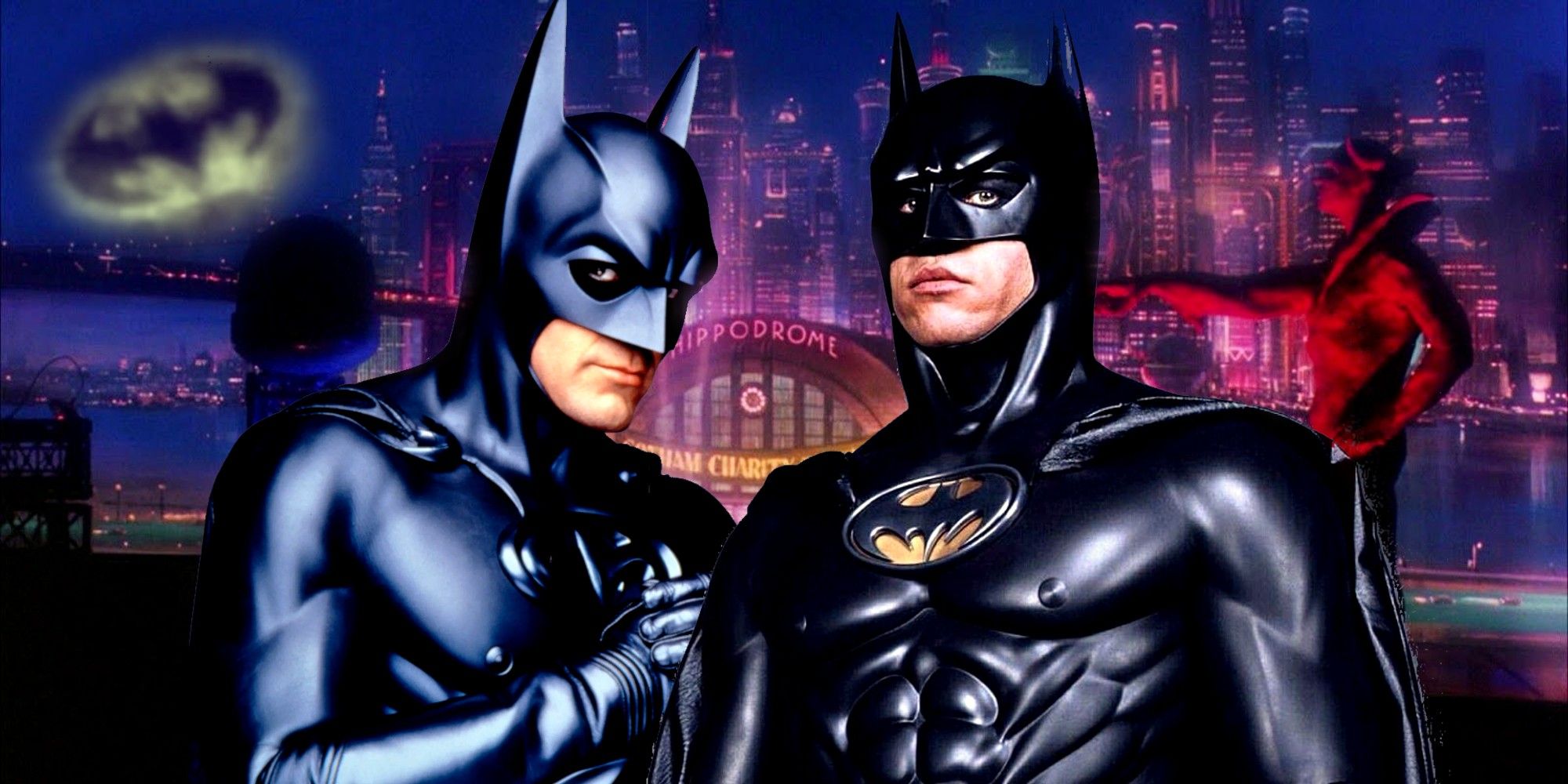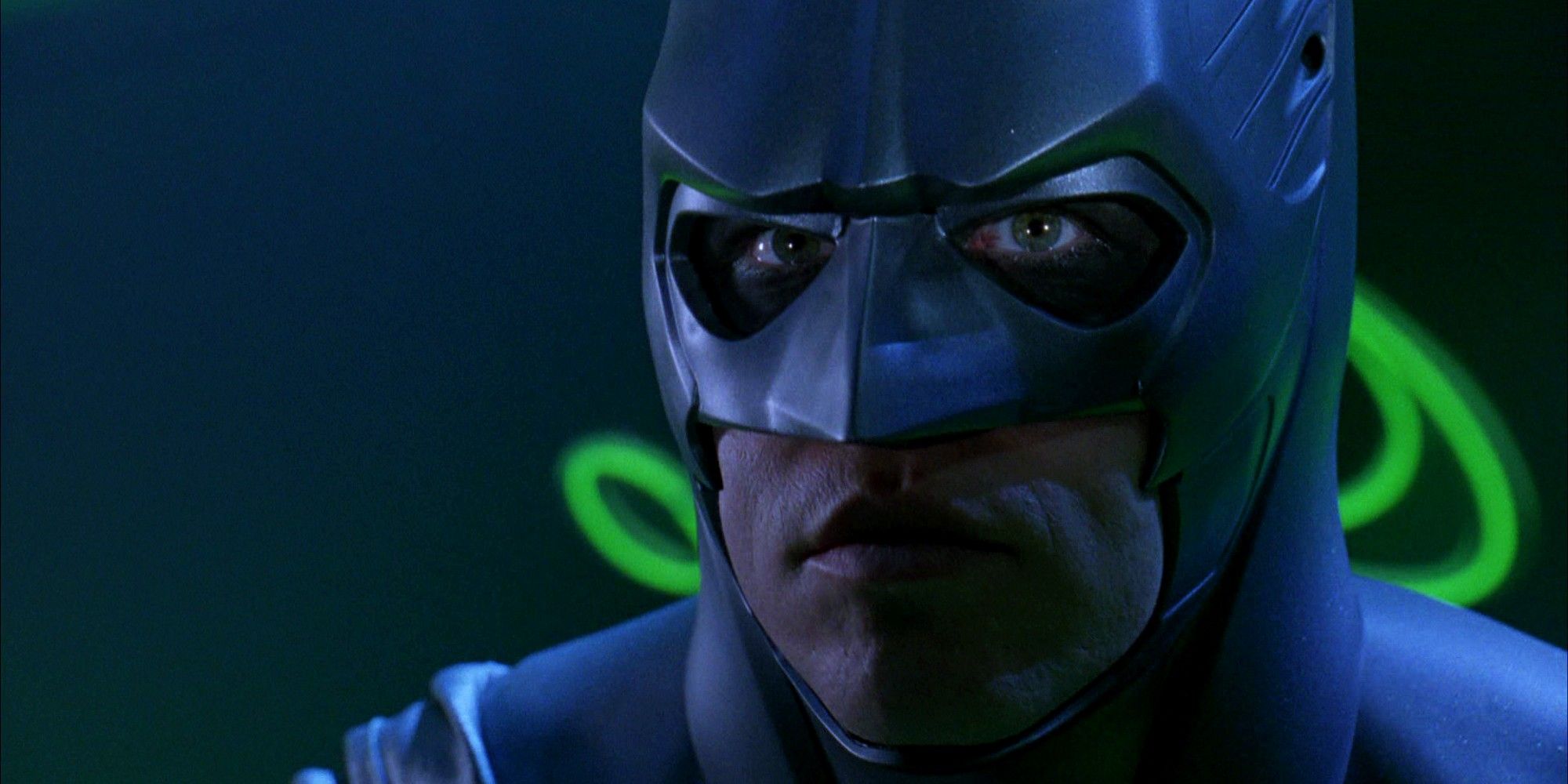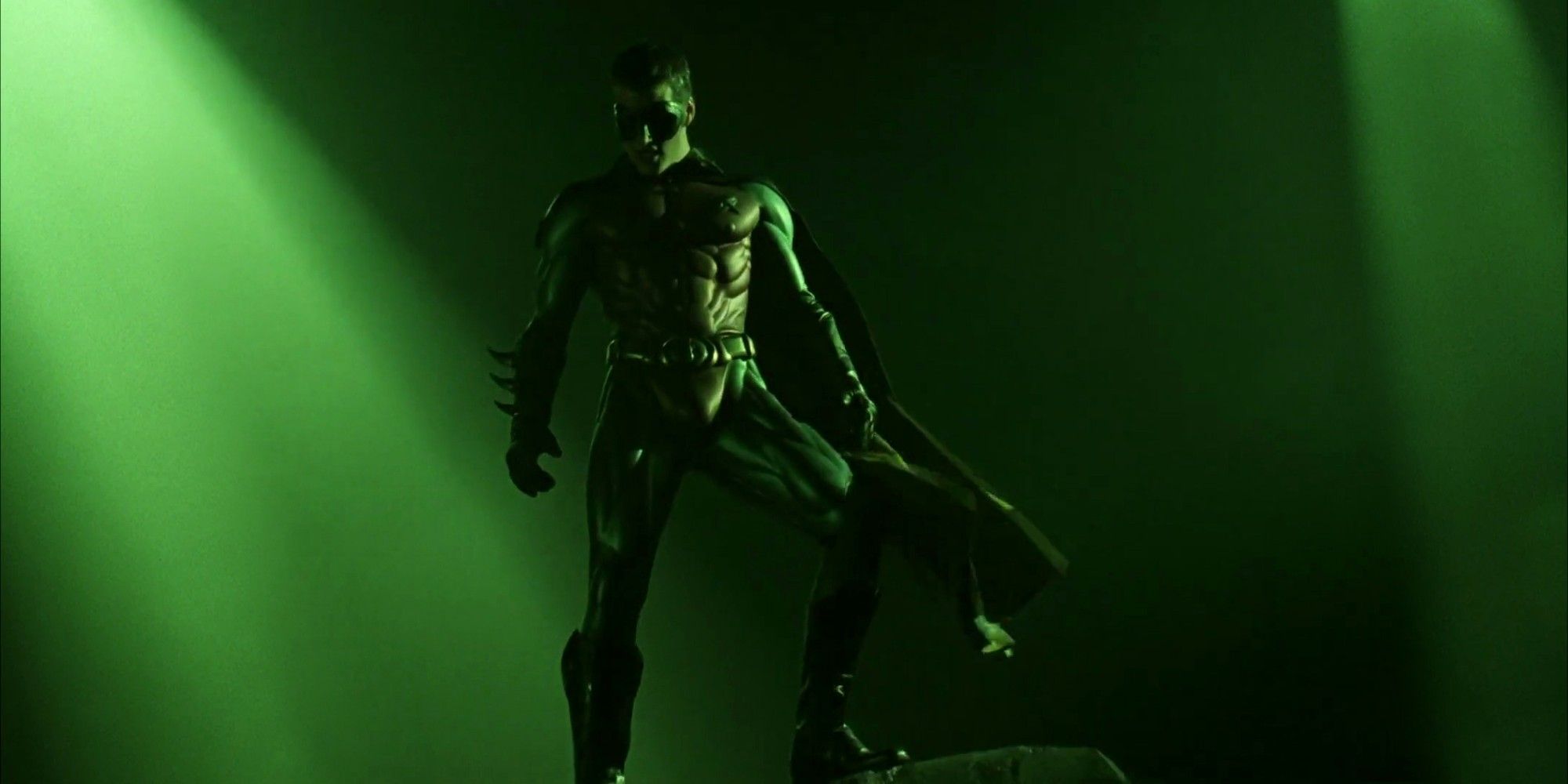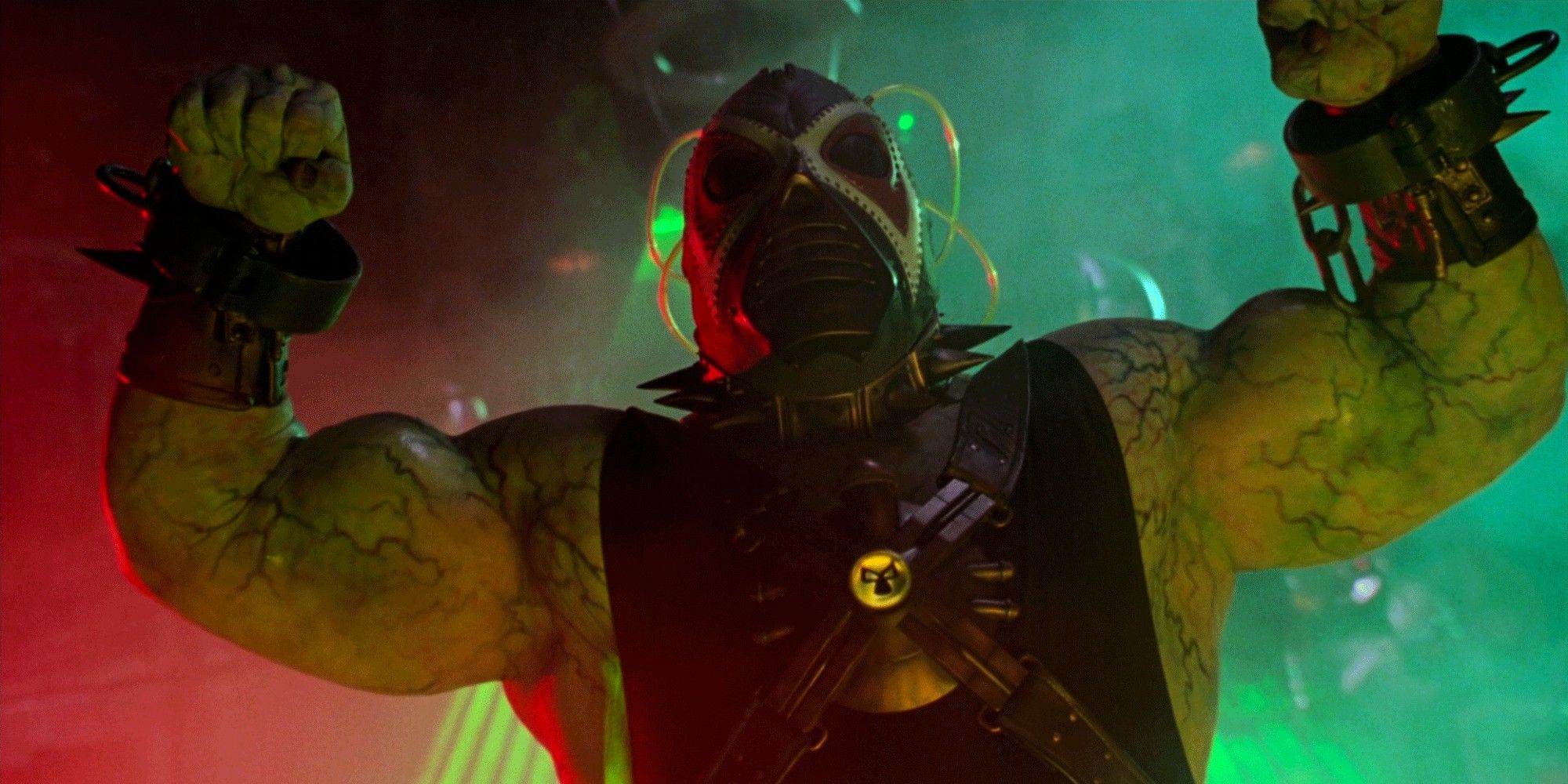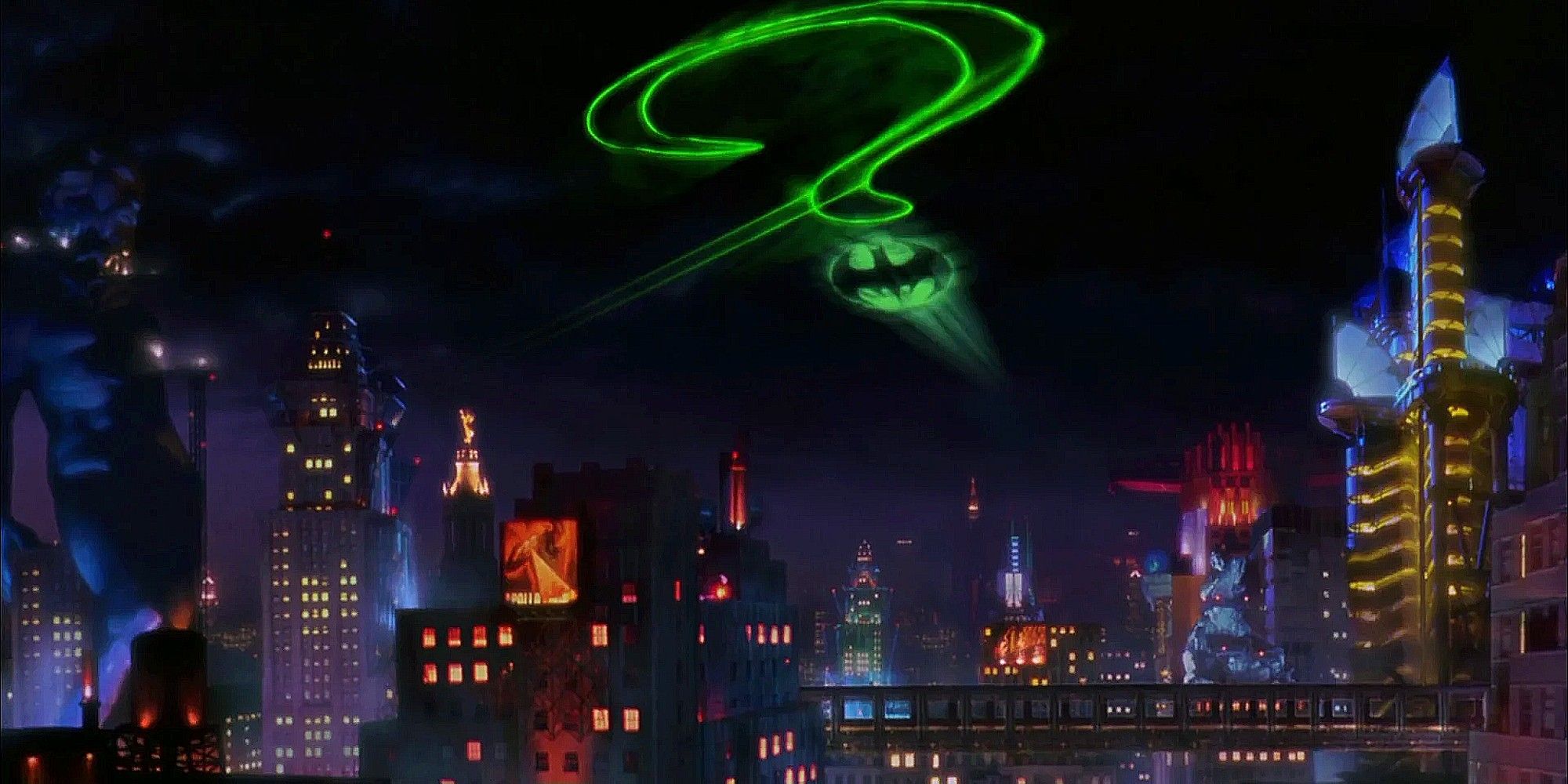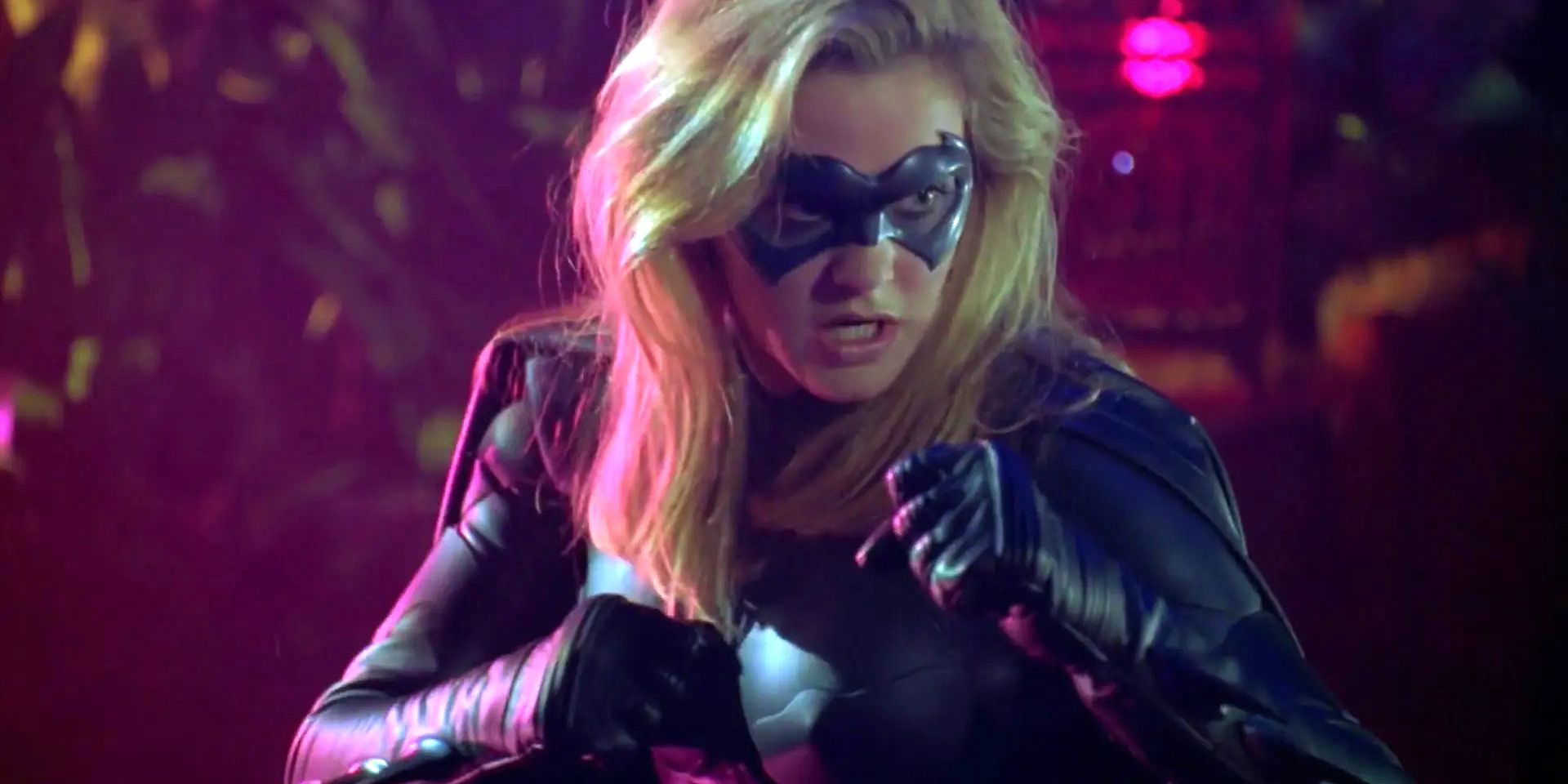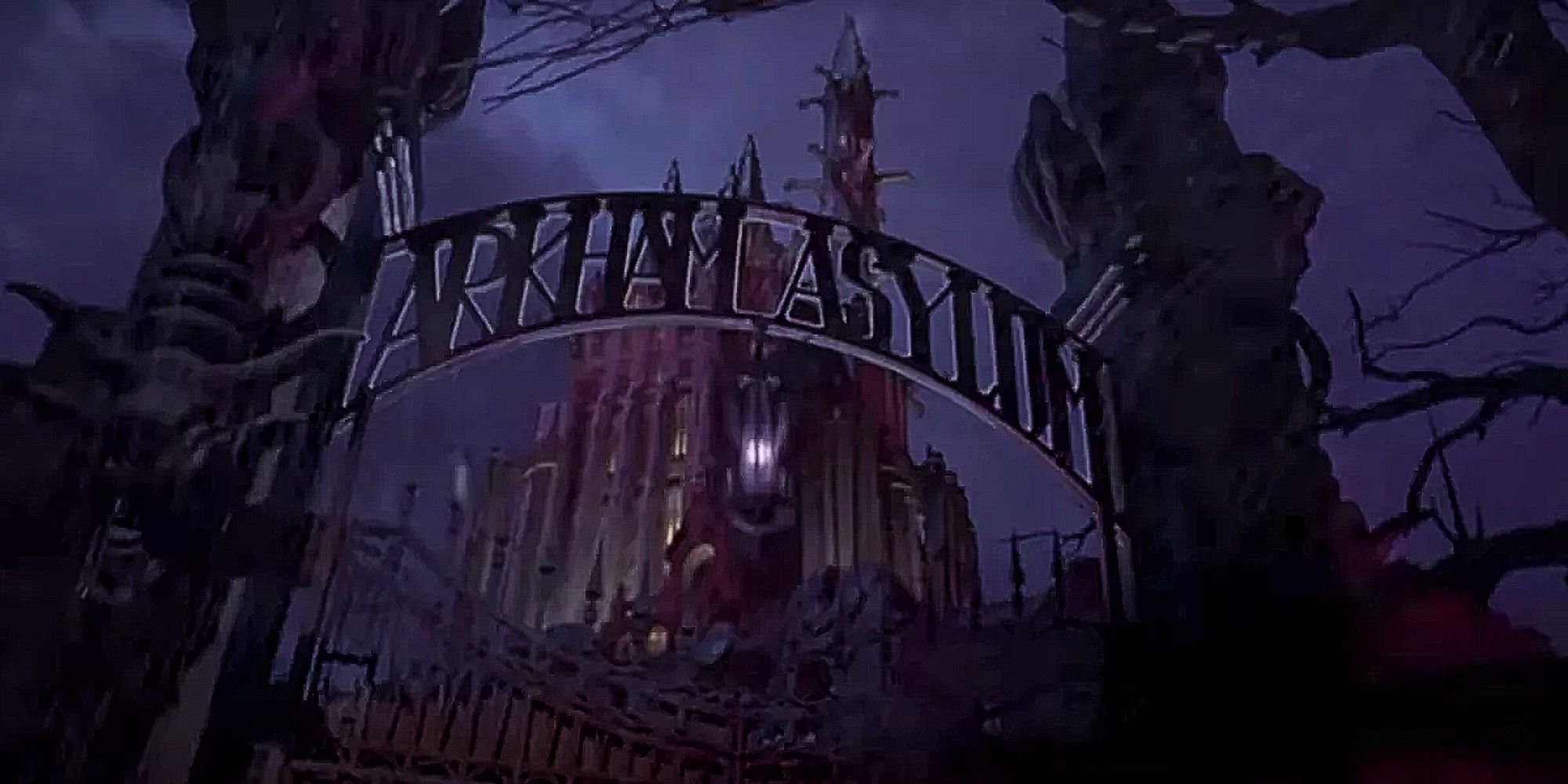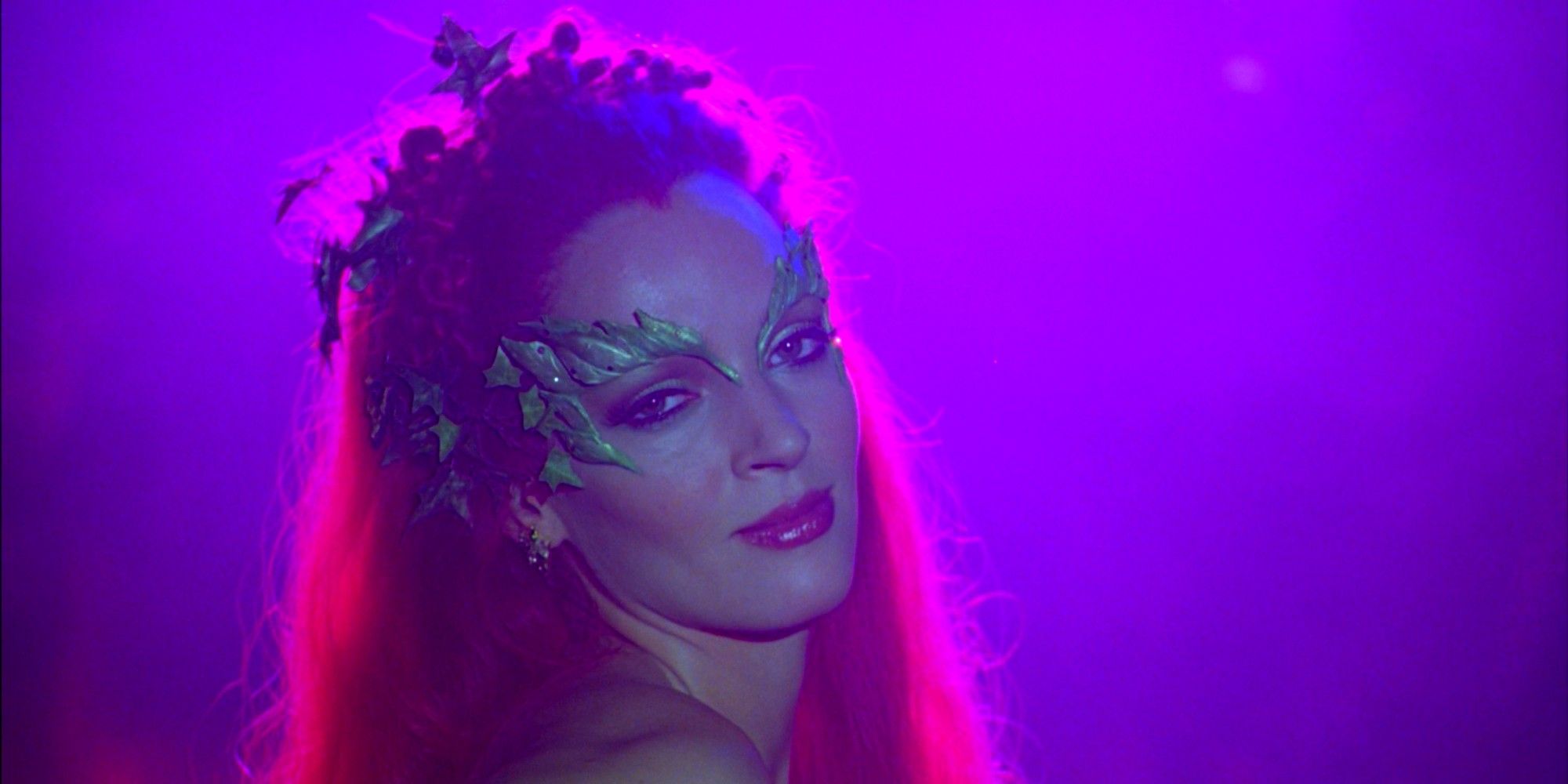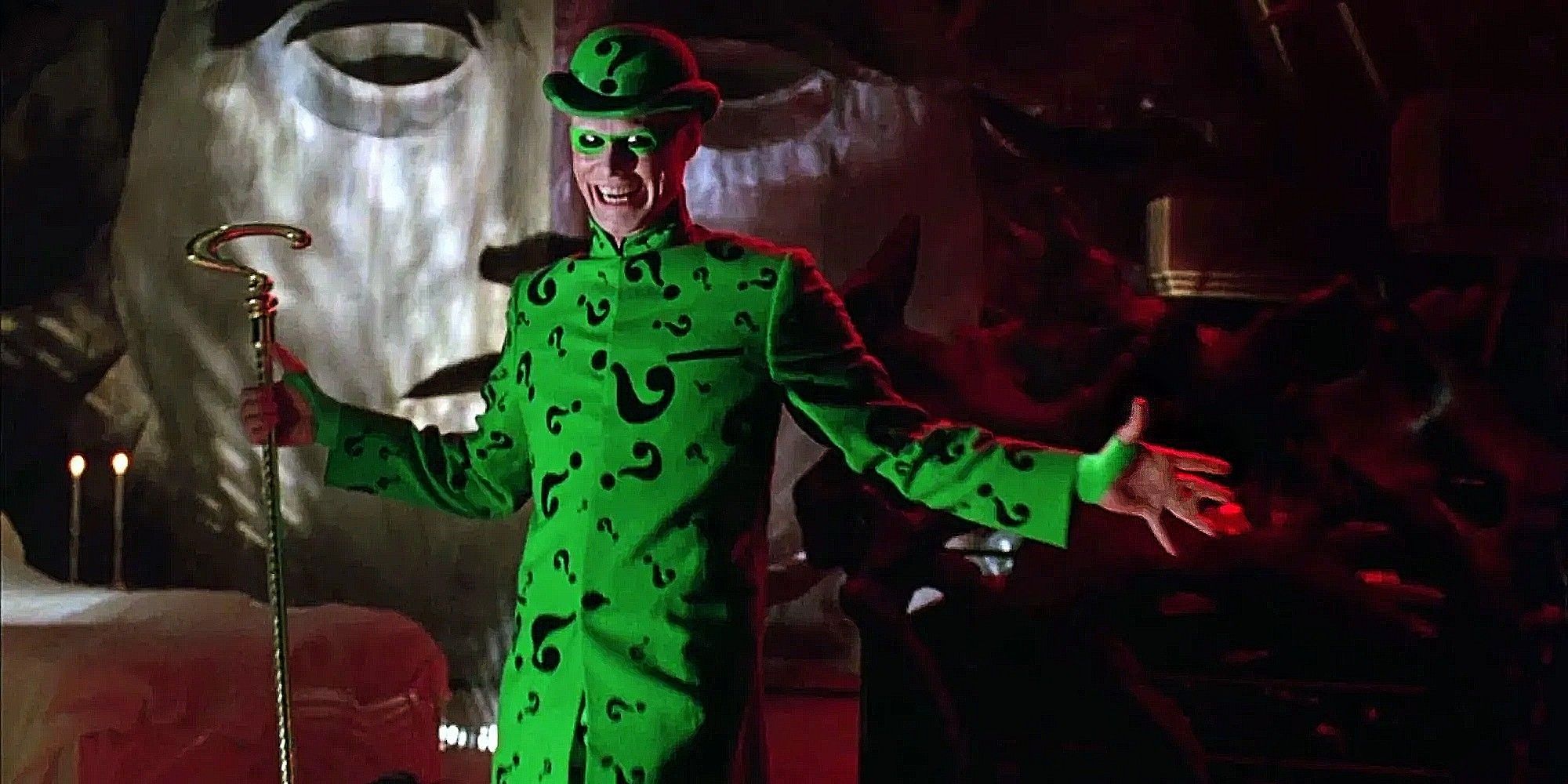Joel Schumacher's Batman movies are often derided by fans and critics alike. While his first, Batman Forever, was received fairly well received, it struggled to live up to Tim Burton's legendary 1989 Batman and its sequel Batman Returns. Schumacher's second Bat-flick, Batman & Robin, is repeatedly ranked the weakest in the cinematic canon. George Clooney at one point even claimed to have "killed the franchise." Despite this, Schumacher's Batman did evolve the series in some necessary and successful ways.
It is all too easy to dismiss Batman Forever and Batman & Robin. There are certain aspects the movies did very well, but these often go overlooked due to the plethora of flaws overshadowing them (like the infamous Bat-nipples). From Val Kilmer's performance as Batman, to the expansion of the Bat-family and Robin's tragic backstory, Batman Forever and Batman & Robin evolved the series from the previous Gothic incarnations into a more child-friendly romping adventure.
Val Kilmer Playing Batman
Val Kilmer might not have been the first choice for Batman Forever, but he certainly stepped into the cape and cowl in a manner befitting the character and legacy left by Michael Keaton. Kilmer is both serious and comically stiff as the Batman. His Bruce Wayne is a slightly bumbling glasses wearer, who couldn't possibly be cool enough to be Batman. Val Kilmer - who received praise for his role as Iceman in Top Gun - brought his new action star status to Batman. Kilmer manages to encapsulate Keaton's seriousness and Adam West's cartoonish quality, making him a perfect choice for a 1990s Dark Knight.
Robin's Tragic Origin Story
Though not entirely comic book-accurate, Batman Forever captures the darkness and tragedy of Robin's backstory. It truly encapsulated the birth of a hero, detailing precisely the torment that plagues Dick Grayson and prompts his dedication to crime fighting. Perfectly casting Chris O'Donnell as Robin, Schumacher's update of the classic Robin outfit (seen earlier as part of the Flying Graysons' uniform) helped bring the character into the modern age. The heartbreaking scene where Robin's family is murdered by Two-Face as they attempt to rescue the circus audience is flawlessly punctuated by Batman Forever's tragic score.
Joel Schumacher's Batman Soundtracks
Both of Schumacher's Batman movies were scored by composer Elliot Goldenthal, who won an Academy Award for best original score in 2002. Like Burton's movies, Schumacher's films share some of the same motifs, unifying the two neatly. Goldenthal very aptly took inspiration from Russian composers Prokofiev and Shostakovich, using doubled beats and paired notes to represent Two-Face in Batman Forever and a theremin to recall 1950s sci-fi movies for The Riddler. Goldenthal's scores are superficially different from Elfman's classic scores for Batman and Batman Returns - utilizing more drums and brass flares for an action movie feel rather than sinister film noir.
Not to mention the incorporation of pop songs into the soundtrack was more successful in Schumacher's movies than in their predecessors. Both Batman Forever and Batman & Robin received much higher praise for their soundtrack albums than for the movies themselves. While only little from these albums actually appears during the moves (much consigned to the closing credits), any association with Seal's "Kiss From A Rose" can only be positive.
The Neon Gotham City
Batman Forever and Batman & Robin each contain a scene in which The Dark Knight's newest side-kick absconds into the night, finding themselves embroiled in local gang activity. These scenes feature another new design brought to the franchise by Schumacher - neon. Neon works as both an accentuation of Burton's Gothic art-deco design, making Gotham more striking and appear like a comic book, and also means darker scenes can be lit more dynamically - capturing the attention of the young target audience. It is certainly a vivid contrast from the Christmas-themed Batman Returns which was draped in so much snow, the Gothic architecture almost appeared black and white.
The neon in Schumacher's Batman movies also helps remove Gotham City from a specific time and place. The neon itself feels very futuristic while the gothic-deco style recalls the past, creating a Gotham that feels part of neither. Like the music, a glowing neon Gotham remained over both Batman Forever and Batman & Robin, providing a sense of continuity that unified the pair.
Expanding The Bat-Family
The execution could be debated, but the inclusion of a wider Batman entourage was a necessary step after the brilliant Burton movies. This was needed to expand the universe and central characters, and the addition also aligned the films with the iconic Batman: The Animated Series. Batman & Robin offers a Bat-trio that children would recognize by introducing a version of Batgirl. It might not be the Batgirl series fans lost, but this was a necessary evolution for the 1990s franchise. A Robin solo spin-off was also conceived initially, along with further Batman films. This means Schumacher could have sparked the first true superhero extended universe.
Best Cinematic Arkham Asylum
It might be brief, but the appearances of Arkham Asylum in Schumacher's movies are tonally perfect. Dripping with Burton-esque Gothic designs, the foreboding decrepit building looms over the city of Gotham in a manner far more akin to the comics than depicted elsewhere. A brief scene at the conclusion of Batman Forever depicts The Riddler incarcerated, but a deleted scene showing Two-face's escape from the institution at the movie's opening provides a further glimpse inside the asylum. Batman & Robin shows much more of the dilapidated building's interior, which later depictions often modernize. The Arkham Asylum in Joker was much more modern than Schumacher's, and frankly, worse for it.
Vintage Batman Campiness
A common misconception of the Schumacher Batman movies is that they attempted to maintain the gloomy tone set during Burton's movies. Batman Forever and Batman & Robin are supposed to be silly, child-friendly, and slightly camp. Batman Forever bridges the gap, even explicitly referencing the Adam West era with Robin's "Holy encrusted metal, Batman!" before clarifying, "this encrusted metal, it's full of holes!" Batman & Robin leans even further into this, with performances so cartoonish they become laughable. This campiness truly captures the theme of 1960s Batman, further evolving Burton's tone into an escapade far more acceptable for the whole family.
Jim Carrey as The Riddler
Jim Carrey is often lauded for "stealing the show" in Batman Forever, in a performance even more memorable than Tommy Lee Jones as Two-Face. Carrey's Riddler matches the cartoonish tone which permeates Schumacher's Batman movies, offering a Riddler much more animated than before, and certainly not a Riddler as dark as in The Batman. Carrey's performance provides children with a villain they could truly love to hate, while also detailing the character's downfall and descent into madness. Carrey might not be today's choice for the character, but he was perfect in the 1990s.
Batman Forever and Batman & Robin might not hold up with a modern rewatch, but it is important to remember their purpose at the time. Schumacher's Batman movies were designed to reorient the franchise towards a younger, 1990s audience, while still honoring the aesthetic and tone they inherited. In this regard, the films were a success. With several serious Batman movies now in the mix, and with more on the way, a bit of campy adventuring is a welcome respite.

